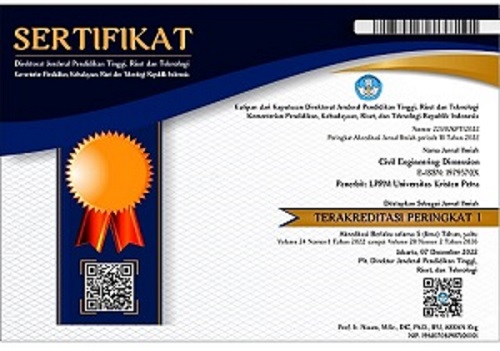ALTERNATE PRICING STRATEGIES IN CONSTRUCTION
 :
:
https://doi.org/10.9744/ced.2.1.pp.%2056-64
Abstract
Recent research findings on pricing strategies both in general and in construction are reviewed and explored. First%2C pricing strategy in general%2C mostly in the manufacturing industry%2C is reviewed. It includes the concepts of pricing strategy%2C predatory pricing%2C price wars%2C and price policy development. Second%2C pricing strategy in construction is explored. It includes various pricing models for bid price determination%2C such as the Friedman-Gates models%2C expected utility models%2C risk-pricing model%2C and the crew-day%2C multiple regression%2C and fuzzy-set pricing models. In conclusion%2C pricing strategies in construction are still predominantly based on a cost-based approach. More recent models try to close the gap between the models and the real life conditions of a bidder%5C%27s decision-making process. It appears that there are more problems in cost-based pricing as opposed to market-based pricing. Consequently%2C it is highly recommended that%2C alternative pricing approach such as that are closer to the proposed market-based pricing model need to be explored and developed for use in the construction industry.Abstract in Bahasa Indonesia :
Pricing+strategy%2C+cost-based+pricing%2C+market-based+pricing.
Downloads
Published
2004-06-02
How to Cite
Mochtar, K., & Arditi, D. (2004). ALTERNATE PRICING STRATEGIES IN CONSTRUCTION. Civil Engineering Dimension, 2(1), pp. 56-64. https://doi.org/10.9744/ced.2.1.pp. 56-64
Issue
Section
Articles
License
Authors who publish with this journal agree to the following terms:- Authors retain the copyright and publishing right, and grant the journal right of first publication with the work simultaneously licensed under a Creative Commons Attribution License that allows others to share the work with an acknowledgement of the work's authorship and initial publication in this journal.
- Authors are able to enter into separate, additional contractual arrangements for the non-exclusive distribution of the journal's published version of the work (e.g., post it to an institutional repository or publish it in a book), with an acknowledgement of its initial publication in this journal.
- Authors are permitted and encouraged to post their work online (e.g., in institutional repositories or on their website) followingthe publication of the article, as it can lead to productive exchanges, as well as earlier and greater citation of published work (See The Effect of Open Access).
















